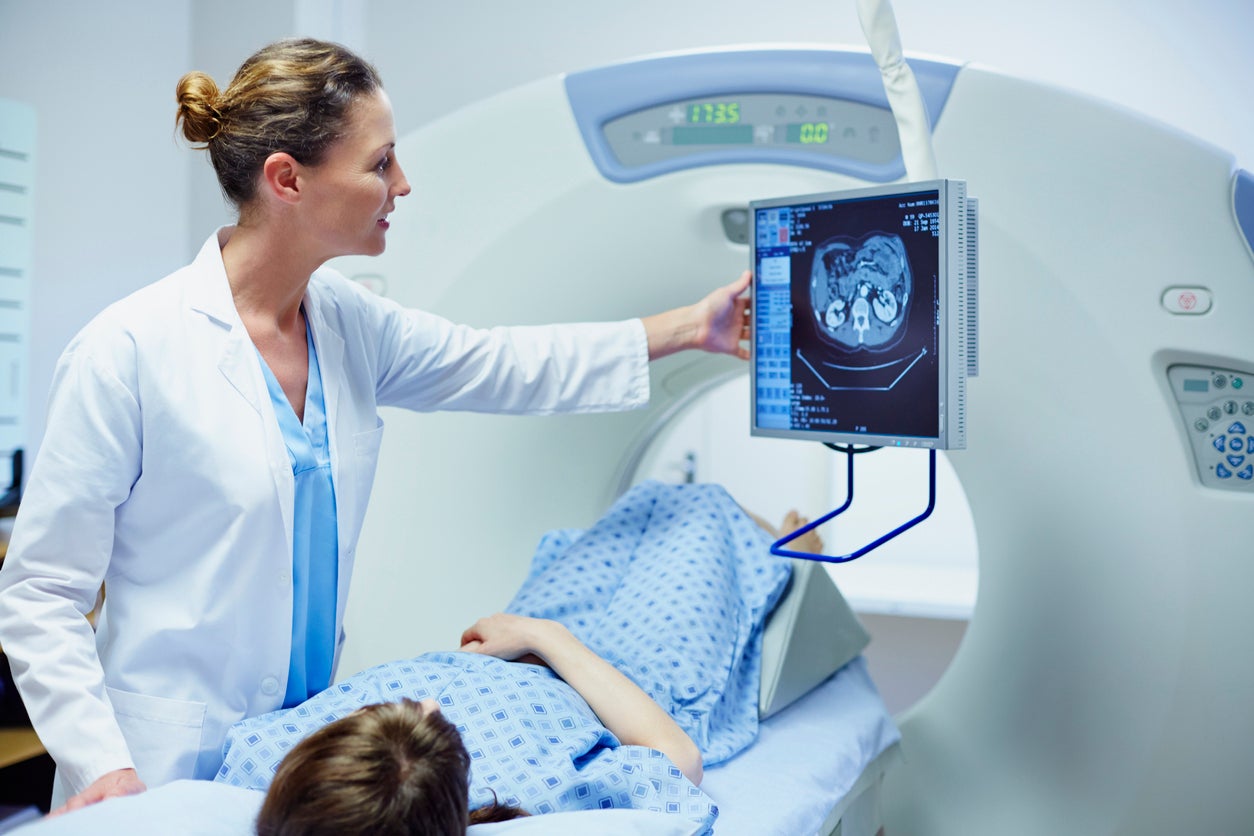NHS services ‘close to failure’ as patients wait months for diagnostic tests
Children in specialist hospitals are among those waiting longer than the target six weeks
Your support helps us to tell the story
From reproductive rights to climate change to Big Tech, The Independent is on the ground when the story is developing. Whether it's investigating the financials of Elon Musk's pro-Trump PAC or producing our latest documentary, 'The A Word', which shines a light on the American women fighting for reproductive rights, we know how important it is to parse out the facts from the messaging.
At such a critical moment in US history, we need reporters on the ground. Your donation allows us to keep sending journalists to speak to both sides of the story.
The Independent is trusted by Americans across the entire political spectrum. And unlike many other quality news outlets, we choose not to lock Americans out of our reporting and analysis with paywalls. We believe quality journalism should be available to everyone, paid for by those who can afford it.
Your support makes all the difference.More than 184,000 patients in England are waiting three months or longer for key diagnostic tests as clinicians warn some NHS services are “close to failure”.
Patients should not wait more than six weeks for tests under rules set out in the health service’s constitution.
But children in some specialist hospitals are among those waiting longer than this, with doctors and radiographers warning they are already working at “over capacity”.
Medics warn that clearing the backlog in CT and MRI scans alone would require a 10 per cent rise in staff numbers.
According to an analysis of October’s waiting times for diagnostic tests by The Observer, more than half of all patients who had been referred for tests had been waiting six weeks or longer at some of England’s biggest trusts.
The NHS aims for fewer than 1 per cent of patients to be waiting six weeks or longer.
At the end of October 2022, 426,003 patients had been waiting six weeks or more in England for 15 key diagnostic tests and procedures, which was 27.5 per cent of the total patients waiting. The number of patients waiting 13 weeks or longer was 184,187, the figures also show.
NHS medics carry out more than 2 million diagnostic procedures in England each month for a range of purposes, including diagnosing cancer, identifying heart disease and establishing the extent of musculoskeletal injuries.
A briefing published last month by the Imaging and Oncology Forum, which includes the Society of Radiographers and the Royal College of Radiologists, warned that diagnostic imaging services were being “brought close to failure”.

It stated: “Over-capacity working threatens patient safety, is harming healthcare professionals and is challenging service quality.”
Dr Katharine Halliday, president of the Royal College of Radiologists, said the data is “concerning but not surprising”.
“We have known for some time that shortages in the diagnostic workforce are a core driver behind the NHS’s slow recovery from Covid-19, and are limiting our ability to give safe and effective care,” she said.
“Today’s statistics are yet more evidence of that. NHS staff have been working over capacity for years, but there simply aren’t enough of us. To clear the backlog of patients waiting for CT and MRI scans within a month, the NHS in England would have to employ 390 radiology consultants, the equivalent of a 10 per cent increase in the current workforce.
“We’ve had years of underinvestment in the NHS workforce, so we hope the government will soon publish a fully-funded workforce plan, which would reassure patients and doctors that these backlogs can be tackled, targets can be met, and patients can be diagnosed in the earliest possible time.”
An NHS spokesperson told The Observer: “Despite the ongoing pressures on services which are exacerbated by flu hospitalisations, the issues in social care where we cannot discharge patients who are ready, and the record numbers needing A&E, NHS staff continue and have powered through to bring down some of our longest waits for care including tens of thousands more people getting the diagnostic tests and checks they needed in October compared to the previous month.
“The NHS is rolling out more than 100 community diagnostic centres, so even more people can get tested, alongside expanding its imaging and endoscopy capacity in the new year.”



Join our commenting forum
Join thought-provoking conversations, follow other Independent readers and see their replies
Comments